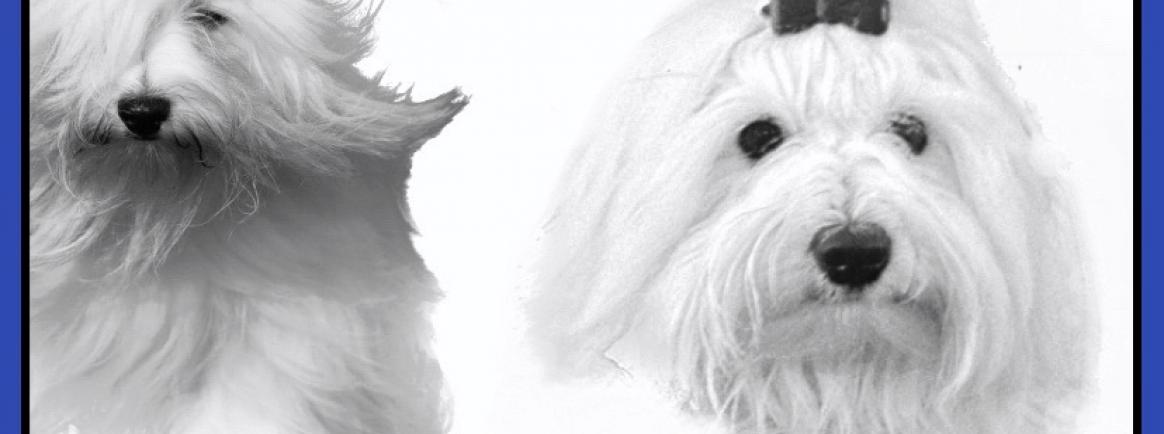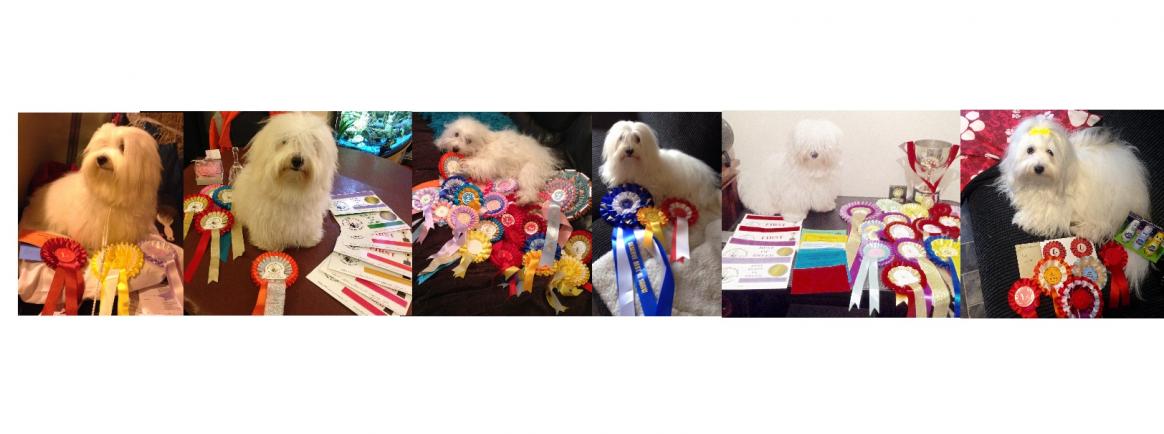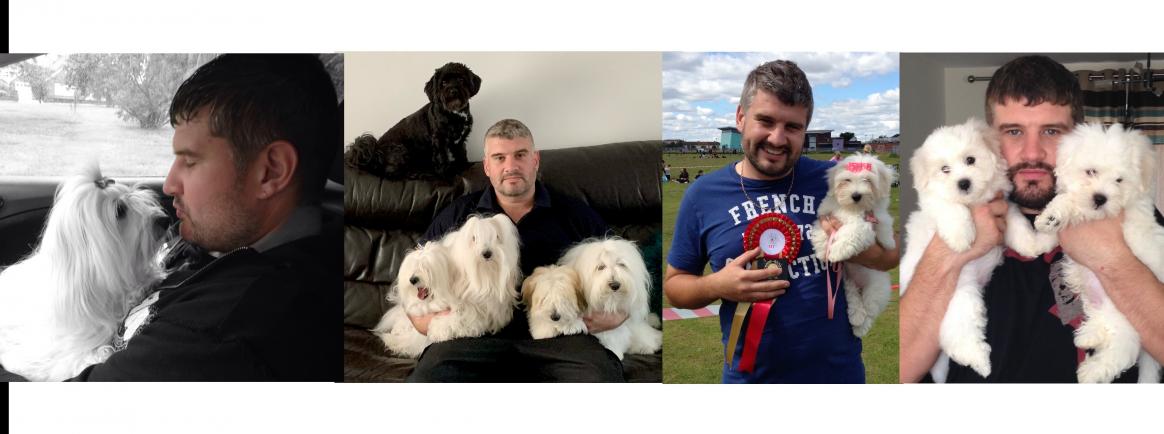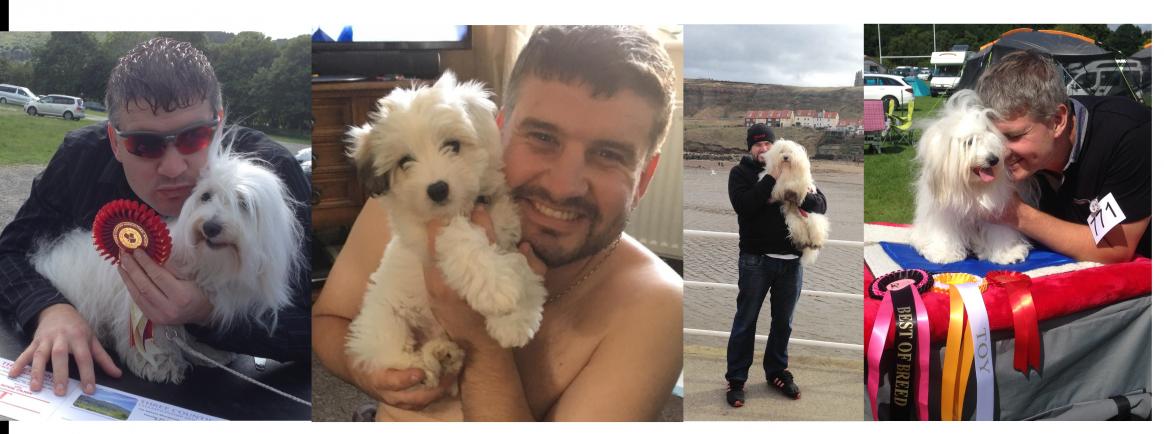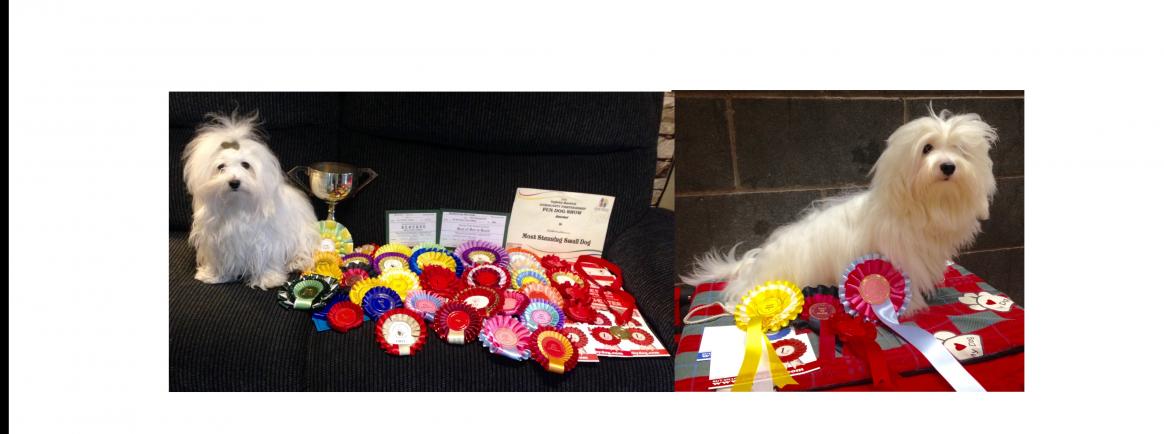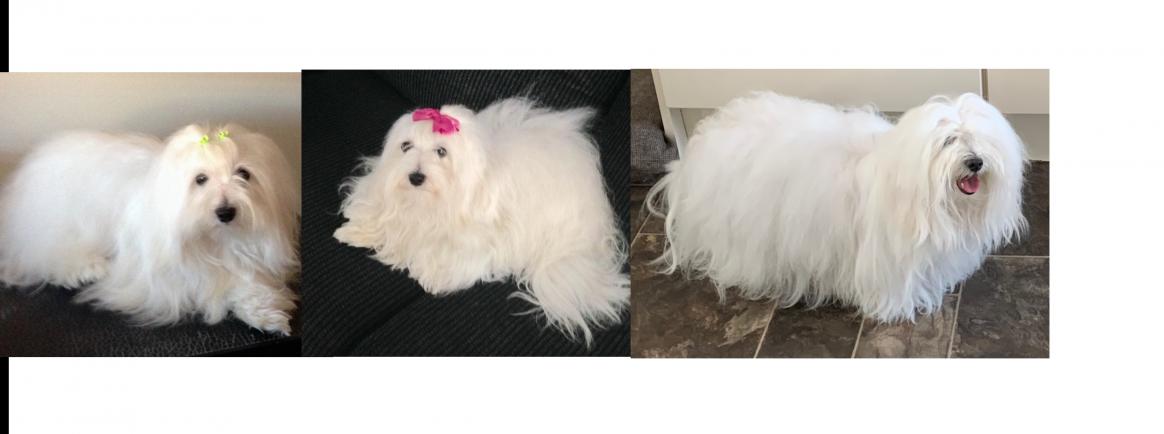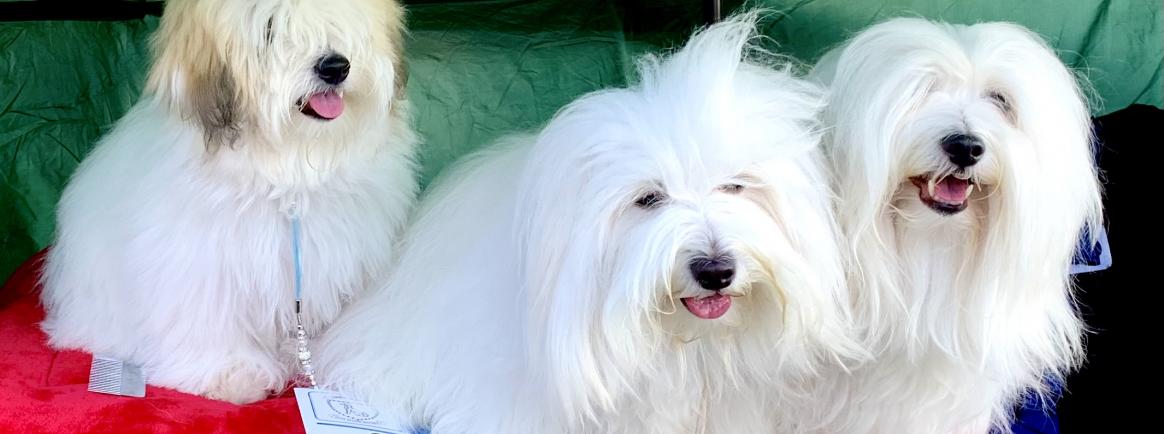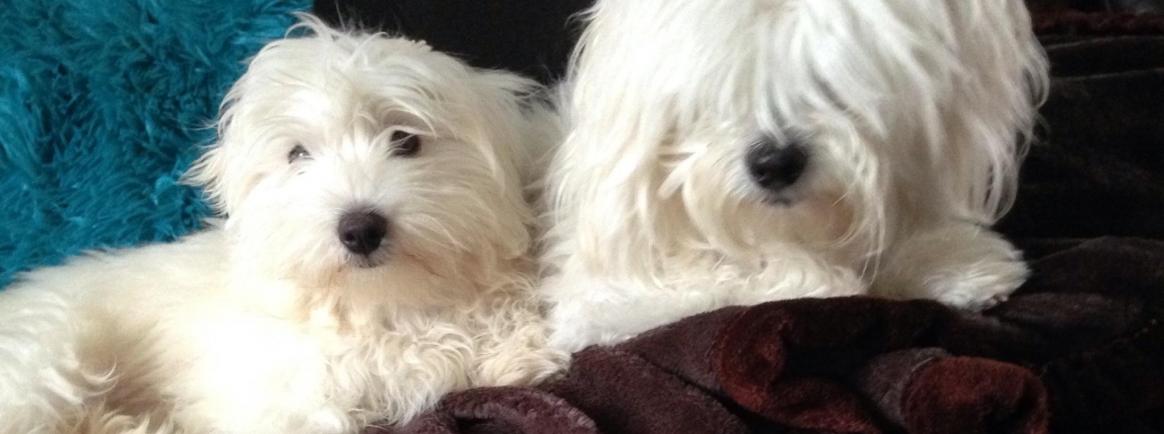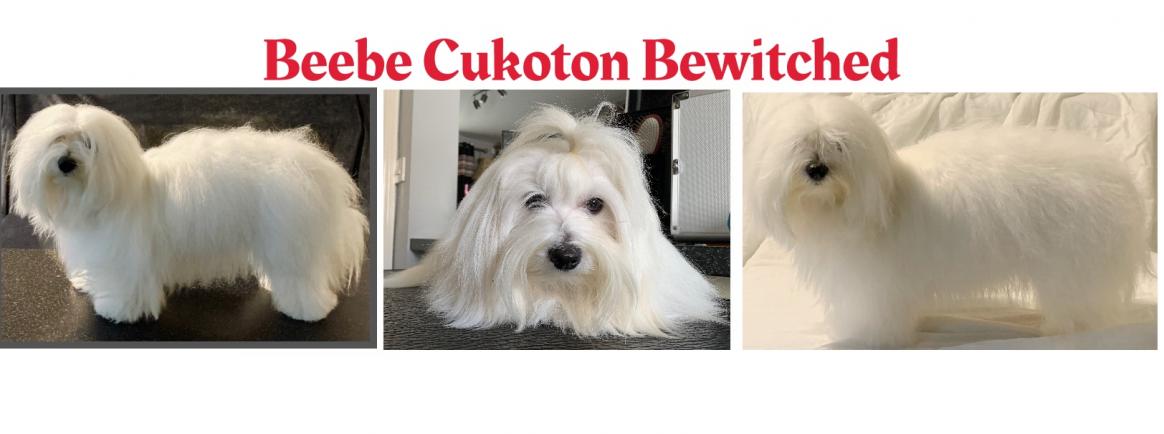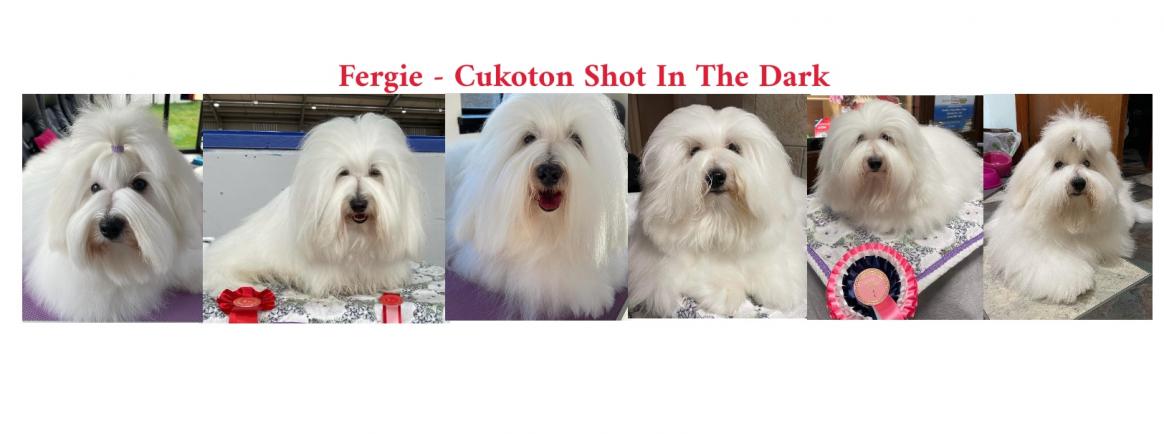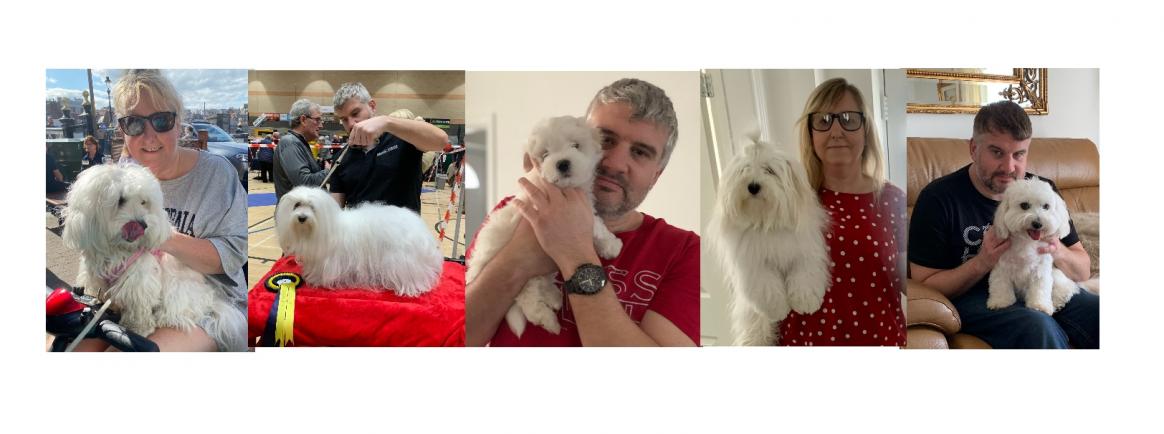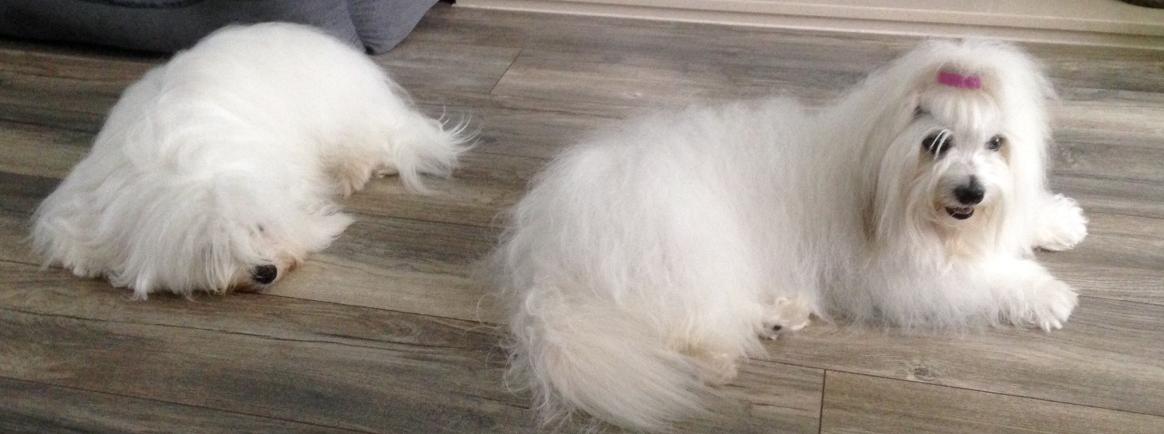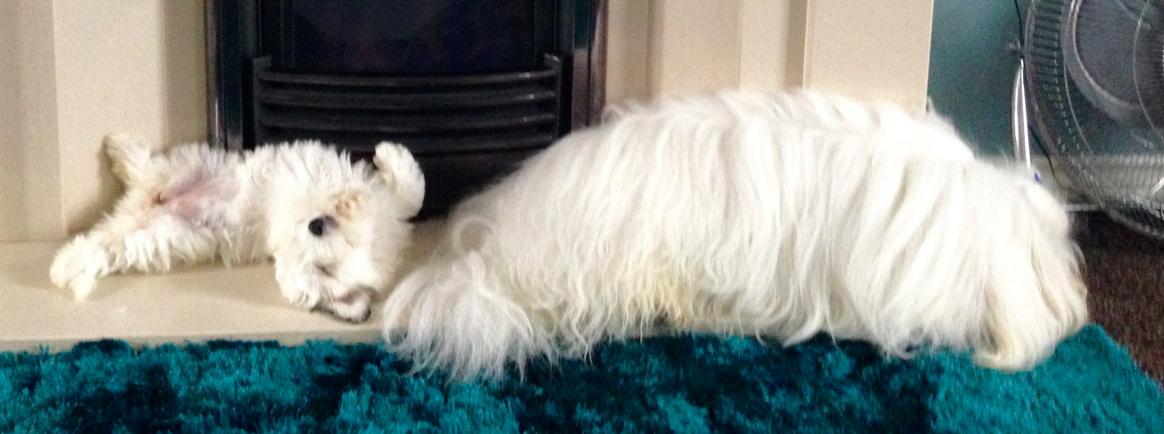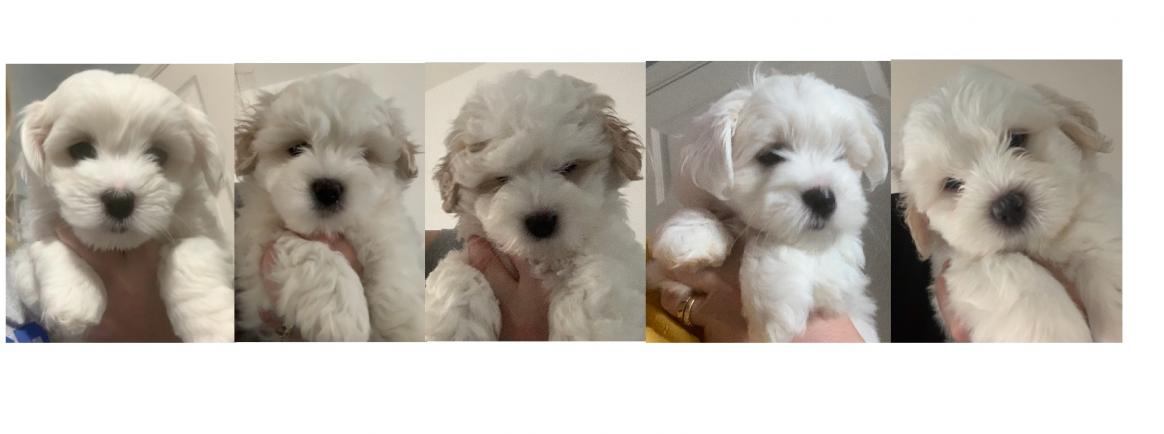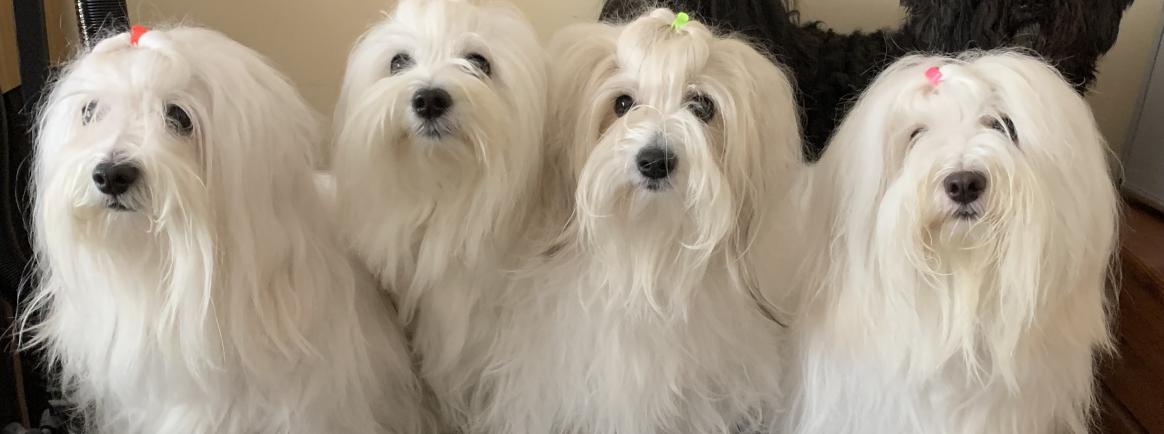Coton de Tulear Health
General health
No breed is known to be 100% free from health problems. However, thanks to advances in medical research more canine health problems can now be identified and treated effectively.
Some of the conditions listed below are common to many breeds, others are determined by evolution and the breed’s genetic profile. There are tests available for some of the conditions that have been found in Cotons.
This guidance below will provide you with information regarding the health and tests available for the Coton de Tulear
Bones
Chondrodystrophy CDDY is a cartilage disorder that causes premature degeneration of intervertebral discs; they become more susceptible to herniation. Intervertebral Disc Disease, known as IVDD, is the most common spinal disease in dogs; it can also be found in cats. Animals with shorter legs and longer bodies are at higher risk than those with longer legs and shorter bodies. Further information regarding IVDD is available on the Cukoton website. (Semi-dominant trait)
Chondrodysplasia CDPA is an abnormal formation of cartilage that produces elements of dwarfism. Known as CDPA, this condition is more common in dogs with longer bodies and lower dogs; Dachshunds and Corgis are more susceptible than Cotons. (autosomal-recessive trait)
Angular Limb Disorder, known as ALD, is an abnormal development of the foreleg bones (radius and ulna) that can result in shortened limbs and bending or twisting of leg. ALD can affect all ‘dwarfism’ breeds. (heterogeneous disorder - can occur as a result of genetics or a physical injury)
Degenerative Myleopathy DM is a progressive neurological disorder, known as DM, that affects the spinal cord. Initially an affected dog can have an unsteady gait. As the disease progresses the hind legs will weaken until it will be unable to walk. (autosomal-recessive trait)
Patella luxation is a condition of kneecap (patella) that can affect one or both knees. When the patella ‘wobbles’ the dog may skip, hop or hold its leg up. When both knees are affected the dog may hop like a bunny for short periods (autosomal-recessive trait)
Eyes
Canine Multi-Focal Retinopathy (CMR2) is a recessive disorder that causes raised lesions on the retina. The lesions alter the appearance of the eye but usually do not affect sight. (autosomal-recessive trait)
Primary Lens Luxation (PLL) is a disorder that is characterised by weakened zonal fibres that eventually lead to dislocation of the lens of the eye. (autosomal-recessive trait)
Progressive Retinal Atrophy (PRA-PRCD) is a disorder that causes the cells in the retina of the eye to degenerate and die. PRA is known to affect over 40 breeds of dogs. (autosomal-recessive trait)
Dry eye is a painful condition that develops when the dog is unable to produce a normal amount of tears. It usually affects both eyes causing inflammation. (autosomal-recessive trait)
Other conditions
Hyperuricosuria - Hyper/High Uric Acid (HUU) causes hard stones to form in the bladder resulting in difficult urination and bladder inflammation. (autosomal-recessive trait)
Von Willebrand Disease Type 1 (VWD Type 1) is an inherited bleeding disorder that inhibits the normal blood clotting process, causing prolonged bleeding after injury. (Autosomal-dominant trait)
Primary Hyperoxaluria (PHPT) is a metabolic disorder caused by deficiency of a liver enzyme, that can affect the kidneys, joints, bones, eyes, and other tissues. (autosomal-recessive trait)
Malignant Hyperthermia (MH) is a dominant genetic mutation that can cause causes muscle contractions, increased metabolism, rapid heartbeat and elevated temperature in response to specific triggers, such as exposure to certain drugs, inhaled anaesthetic like halothane. Triggers can also be certain ingredients in foods like caffeine. MH is also known as ‘canine stress syndrome’ because the condition can become apparent when a dog is under stress or over stimulated. (autosomal-dominant trait)
Neonatal Ataxia (NA) known as NA is a genetic mutation that affects the nervous system and damages the part of the brain that controls coordination and movement. Symptoms usually start at three weeks of age; affected puppies are usually put to sleep at eight weeks. Breeders can test for this disorder. (autosomal-recessive trait)
Food intolerance
Some of the visible signs that your dog is not on the correct diet can be tear staining, saliva staining, and a tendency to lick feet and other areas of the body. Others may include diarrhoea, bloating, flatulence, frequent scratching, hair loss, red inflamed skin, chronic ear problems, poor growth in young dogs, coughing, wheezing, sneezing and abdominal discomfort.
Skin disorders
Skin Hypersensitivity, known as Allergic Dermatitis, is the most common allergy in dogs caused by sensitivity to pollen, grass, dust, house dust mites, moulds, grass, trees, fleas or certain foods. Symptoms include, itchy skin, rashes and redness, hair loss, infections of skin and ears, over grooming by dog and saliva stained skin, dark, thickened skin, weepy eyes, and acute moist dermatitis. (In some cases atopic dermatitis is caused by inherited mutations CARD11 gene and the tendency to develop allergies is often hereditary)
Yeast infections
Redness and swelling are the first signs of a yeast infection. A dog’s symptoms can progress to swelling warmth and pain in the infected area. The infection’s distinct smell will probably be the first indication that your dog has this condition. (autosomal-recessive trait)
Demodectic Mange most often occurs when a dog has an immature immune system, allowing mites to grow rapidly. It occurs primarily in dogs less than 18 months of age. (not an inherited disorder)
Health monitoring
While this is a comprehensive schedule of issues that may affect a dog, it is important to remember that many are found in all dog breeds and the Coton de Tulear is a healthy breed.
However, monitoring a dog’s health throughout its life is important. Before getting a puppy it is critically important to have confirmation of health testing from the breeder.

